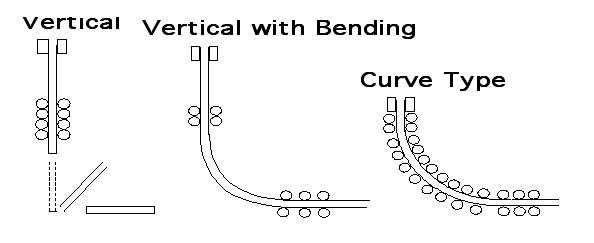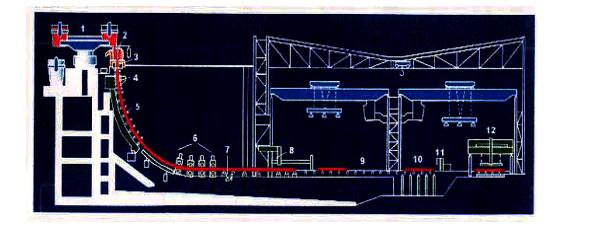Shelton Iron and Steel Co | Shelton Bar | Earl
Granville Works
![]()
How it works: Continuous casting of Steel
| back to 'How the plant works' |
The Shelton Works, Stoke-on-Trent had the worlds first 100% concast production plant.
Continuous Casting is the process whereby molten steel is solidified into a "semifinished" billet, bloom, or slab for subsequent rolling in the finishing mills. Prior to the introduction of Continuous Casting in the 1950s, steel was poured into stationary molds to form "ingots". Since then, "continuous casting" has evolved to achieve improved yield, quality, productivity and cost efficiency.

Examples of Continuous Casters
At Shelton, steel from the Kaldo converter was tapped into a ladle and taken to the continuous casting machine. The ladle is raised onto a turret that rotates the ladle into the casting position above the tundish. Referring to the diagram below liquid steel flows out of the ladle (1) into the tundish (2), and then into a water-cooled copper mold (3). Solidification begins in the mold, and continues through the First Zone (4) and Strand Guide (5). In this configuration, the strand is straightened (6), torch-cut (8), then discharged (12) for intermediate storage or hot charged for finished rolling.

General Bloom/Beam Blank Machine
Configuration
|
|
|
Based on an article by Bruce Kozak, & Joseph Dzierzawski, SMS Demag
questions/comments/contributions?
email: Steve Birks![]()